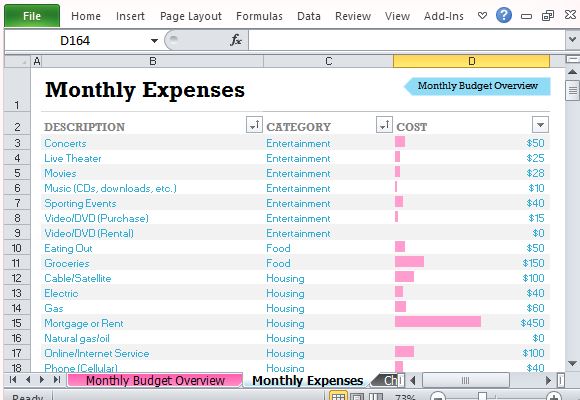
Setting up two separate investment accounts is one way to increase your nest-egg size. One account is stable, low-risk, and allows you to access your money during times of crisis. The other account is more risky, but can grow your nest over time.
A nest egg that is protected by the 4% rule for at minimum 30 years can be kept intact.
Michael Kitces, a financial advisor, stated last year that if the 4% rule is followed, your nest egg will have more than doubled by the end of thirty years. Although this sounds great, it could mean you face spending restrictions or be forced to retire earlier. The 4% rule isn't 100% reliable. It's just designed to give you a good chance of preserving your nest egg for at least 30 years.
While the 4% rule doesn't have to be followed strictly, it can serve as a good starting point. Your withdrawal rate may need to be adjusted depending on how the market performs and your age. Common practice is to withdraw at 4% per year for the first 12 months and then slowly reduce it as you move closer to retirement. If you are preparing for an early retirement or need to cover emergency expenses, you should lower your withdrawal rates to at least 2 percent per year.

Annuity can provide guaranteed income for the rest of your life
An annuity can be described as a contract between an insurance company and you. It involves you paying a large lump sum and the insurance company investing that money. The insurance company then pays you regular payments for the rest or for a set number of years. There are two main phases to an annuity - the accumulation phase and the payout phase. During the accumulation stage, you have many investment options.
The only difference between these annuities and other types of annuities is what type of income they pay. An income annuity is structured to provide monthly income for the rest of your life and can be a single life or joint life annuity. This annuity protects you against the possibility of losing your assets in old-age. The income will be earned by the insurer over a long period of time.
Invest in stocks using the 4% rule
The 4% rule for investing in stocks is a formula for investing in stocks that assumes an annual return of at least 4%. This formula was derived from historical returns, which were calculated between 1926-1976. It has been one among the most widely debated and researched investing rules. However, some experts believe that the 4% rule may not be appropriate for all investors.
Retirees need to consider when they will be withdrawing their capital. The 4% rule is frequently applied in retirement. It may not be possible for those who retired in 2000 during the heights of the tech boom to draw down their capital over the next 30 years. Even though their portfolios may have appreciated in value over the decade, the positive returns made during the last decade may not make up for that loss. Also, losing a decade could mean they lose all of their savings.

Budgeting to save your nest egg
First, you need to make sure that your income is available for savings. This is not possible without a budget. By creating a budget, you can track how much you spend on all your bills each month and look for ways to cut your expenses. You can also find ways to save more money by using your nest egg for other things.
Financial planners recommend that their clients have a minimum of six figures in their nest eggs. But a six-figure nest egg is not nearly enough if you expect to live on $50,000 per year. Many financial planners recommend that you have a seven-figure savings plan for retirement.
FAQ
What is estate plan?
Estate planning is the process of creating an estate plan that includes documents like wills, trusts and powers of attorney. These documents will ensure that your assets are managed after your death.
Is it worth hiring a wealth manager
A wealth management service should help you make better decisions on how to invest your money. You should also be able to get advice on which types of investments would work best for you. This will give you all the information that you need to make an educated decision.
But there are many things you should consider before using a wealth manager. For example, do you trust the person or company offering you the service? Is it possible for them to quickly react to problems? Can they clearly explain what they do?
What are the advantages of wealth management?
Wealth management has the main advantage of allowing you to access financial services whenever you need them. To save for your future, you don't have to wait until retirement. You can also save money for the future by doing this.
You can choose to invest your savings in different ways to get the most out of your money.
You could invest your money in bonds or shares to make interest. Or you could buy property to increase your income.
If you decide to use a wealth manager, then you'll have someone else looking after your money. You don't have the worry of making sure your investments stay safe.
What does a financial planner do?
A financial planner can help you make a financial plan. They can help you assess your financial situation, identify your weaknesses, and suggest ways that you can improve it.
Financial planners, who are qualified professionals, can help you to create a sound financial strategy. They can tell you how much money you should save each month, what investments are best for you, and whether borrowing against your home equity is a good idea.
Most financial planners receive a fee based upon the value of their advice. However, planners may offer services free of charge to clients who meet certain criteria.
Statistics
- These rates generally reside somewhere around 1% of AUM annually, though rates usually drop as you invest more with the firm. (yahoo.com)
- If you are working with a private firm owned by an advisor, any advisory fees (generally around 1%) would go to the advisor. (nerdwallet.com)
- A recent survey of financial advisors finds the median advisory fee (up to $1 million AUM) is just around 1%.1 (investopedia.com)
- As of 2020, it is estimated that the wealth management industry had an AUM of upwards of $112 trillion globally. (investopedia.com)
External Links
How To
How to invest once you're retired
Retirement allows people to retire comfortably, without having to work. But how can they invest that money? You can put it in savings accounts but there are other options. One option is to sell your house and then use the profits to purchase shares of companies that you believe will increase in price. You could also take out life insurance to leave it to your grandchildren or children.
You can make your retirement money last longer by investing in property. As property prices rise over time, it is possible to get a good return if you buy a house now. If you're worried about inflation, then you could also look into buying gold coins. They don't lose their value like other assets, so it's less likely that they will fall in value during economic uncertainty.